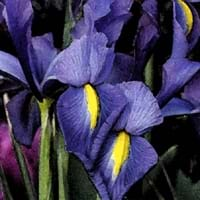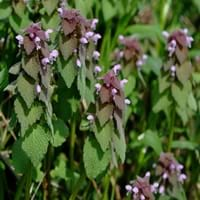Life Span
Perennial
Annual
Type
Herbaceous Perennial
Flowering Plants
Origin
Hybrid origin
World/Pandemic, Europe, Asia
Types
Not Available
Not Available
Habitat
meadows, Riverbanks, Rocky Mountains
Cultivated Beds, gardens
USDA Hardiness Zone
5-9
4-8
AHS Heat Zone
9-5
Not Available
Sunset Zone
2b, 3a, 3b, 4, 5, 6, 7, 8, 9, 10, 11, 12, 13, 14, 15, 16, 17, 18, 19, 20, 21, 22, 23, 24
Not Available
Habit
Clump-Forming
Spreading
Flower Color
White, Yellow, Blue, Purple, Orange, Pink, Rose, Coral, Peach, Burgundy, Lavender, Plum, Orange Red, Dark Salmon, Bronze, Chocolate, Black
Purple, Pink
Flower Color Modifier
Bicolor
Bicolor
Fruit Color
Not Available
Not Available
Leaf Color in Spring
Green, Light Green, Gray Green
Purple, Dark Green
Leaf Color in Summer
Yellow green
Purple, Dark Green
Leaf Color in Fall
Not Available
Not Available
Leaf Color in Winter
Light Green
Light Green
Leaf Shape
Sword-like
Oval to egg shaped
Plant Season
Spring
Not Available
Sunlight
Full Sun, Partial Sun
No Shade, Partial shade
Growth Rate
Medium
Very Fast
Type of Soil
Clay, Loam, Sand
Clay, Loam, Sand
The pH of Soil
Acidic, Neutral, Alkaline
Acidic, Neutral, Alkaline
Soil Drainage
Well drained
Average
Bloom Time
Early Spring, Spring, Late Spring
Spring, Late Spring
Tolerances
Drought
Drought
Where to Plant?
Ground
Ground
How to Plant?
Root Plants
Root Division, Seedlings
Plant Maintenance
Medium
Medium
Watering Requirements
Average Water Needs
Average Water Needs, Do Not over Water, Requires regular watering
In Summer
Lots of watering
Lots of watering
In Spring
Moderate
Moderate
In Winter
Average Water
Average Water
Soil pH
Acidic, Neutral, Alkaline
Slightly Acidic
Soil Type
Clay, Loam, Sand
Clay, Moist, Well drained
Soil Drainage Capacity
Well drained
Moist, Well drained
Sun Exposure
Full Sun, Partial Sun
No Shade, Partial shade
Pruning
Remove damaged leaves, Remove dead branches, Remove dead leaves
Pinch or prune as they grow to promote branching and bushiness, Remove deadheads
Fertilizers
All-Purpose Liquid Fertilizer
All-Purpose Liquid Fertilizer
Pests and Diseases
Bacteria, fungus, Viruses
Not Available
Plant Tolerance
Drought
Drought
Flower Petal Number
Single
Single
Fragrant Bark/Stem
No
Yes
Foliage Texture
Fine
Medium
Foliage Sheen
Matte
Matte
Attracts
Butterflies, Hummingbirds
Not Available
Allergy
Not Available
no allergic reactions
Aesthetic Uses
Beautification, Showy Purposes
Ground Cover
Beauty Benefits
Not Available
Not Available
Environmental Uses
Air purification
Air purification
Medicinal Uses
Not Available
Astringent, Diaphoretic, Diuretic, Purgative, Styptic
Part of Plant Used
Flowers, Root
Flowers, Leaves
Other Uses
Basketary, Used for fragrance
Employed in herbal medicine, Used in Homeopathy
Used As Indoor Plant
No
No
Used As Outdoor Plant
Yes
Yes
Garden Design
Cutflower, Foundation, Mixed Border, Rock Garden, Wall
Groundcover
Botanical Name
IRIS 'Apollo'
LAMIUM purpureum
Common Name
Carmen Iris, Dutch Iris
Purple Archangel, Purple Deadnettle, Red Deadnettle
In Hindi
Dutch Iris
Purple Deadnettle
In German
Dutch Iris
Lila Taubnessel
In French
Dutch Iris
Violet Ortie blanche
In Spanish
Dutch Iris
Púrpura Deadnettle
In Greek
Dutch Iris
μωβ Deadnettle
In Portuguese
Dutch Iris
Roxo Deadnettle
In Polish
Dutch Iris
Jasnota purpurowa
In Latin
Dutch Iris
Purpura Deadnettle
Phylum
Magnoliophyta
Magnoliophyta
Class
Magnoliopsida
Magnoliopsida
Order
Asparagales
Lamiales
Family
Iridaceae
Lamiaceae
Clade
Angiosperms, Monocots
Angiosperms, Asterids, Eudicots
Tribe
Irideae
Not Available
Subfamily
Iridoideae
Lamioideae
Importance of Dutch Iris and Purple Deadnettle
Want to have the most appropriate plant for your garden? You might want to know the importance of Dutch Iris and Purple Deadnettle. Basically, these two plants vary in many aspects. Compare Dutch Iris and Purple Deadnettle as they differ in many characteristics such as their life, care, benefits, facts, etc. Every gardener must at least have the slightest clue about the plants he wants to plant in his garden. Compare their benefits, which differ in many ways like facts and uses. The medicinal use of Dutch Iris is Not Available whereas of Purple Deadnettle is Astringent, Diaphoretic, Diuretic, Purgative and Styptic. Dutch Iris has beauty benefits as follows: Not Available while Purple Deadnettle has beauty benefits as follows: Not Available.
Compare Facts of Dutch Iris vs Purple Deadnettle
How to choose the best garden plant for your garden depending upon its facts? Here garden plant comparison will help you to solve this query. Compare the facts of Dutch Iris vs Purple Deadnettle and know which one to choose. As garden plants have benefits and other uses, allergy is also a major drawback of plants for some people. Allergic reactions of Dutch Iris are Not Available whereas of Purple Deadnettle have no allergic reactions respectively. Having a fruit bearing plant in your garden can be a plus point of your garden. Dutch Iris has no showy fruits and Purple Deadnettle has no showy fruits. Also Dutch Iris is flowering and Purple Deadnettle is not flowering . You can compare Dutch Iris and Purple Deadnettle facts and facts of other plants too.





